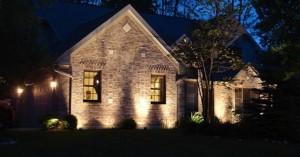 Light-emitting diodes or LEDs are fast becoming the trend among lighting enthusiasts. LED lighting can found practically everywhere: in the world’s latest automobiles, in our homes, television screens and computers, and of course, our streets. Given how LEDs first gained wide acceptance after successful pilot tests as streetlight replacements, it comes as no surprise why many consider LEDs as the gold standard in general outdoor lighting.
Light-emitting diodes or LEDs are fast becoming the trend among lighting enthusiasts. LED lighting can found practically everywhere: in the world’s latest automobiles, in our homes, television screens and computers, and of course, our streets. Given how LEDs first gained wide acceptance after successful pilot tests as streetlight replacements, it comes as no surprise why many consider LEDs as the gold standard in general outdoor lighting.
In fact, LED lighting for outdoor applications can turn into an art. You probably already know LEDs are efficient, but it’s their flexibility and durability that make them truly ideal for the outdoors. However, you can’t just choose any type of LED lights and place them in your [city] home’s outdoor spaces: you can and should exercise a little creativity in lighting the outdoors with light-emitting diode bulbs.
Use Rope LEDs For a More Subtle Look In Your Porch
Unless you’re trying to flood your porch or outdoors with light, you can opt for rope (aka string lights) LEDs and wrap them around tree trunks or on the posts of your porch. Rope LEDs are made up of a series of small LED lights that, when used together simultaneously, are bright enough to provide soft illumination. In addition, rope LEDs are encased in waterproof tubing, protecting them from the elements. They are perfect for turning any outdoor area into a place of relaxation and peace. In fact, you may have seen bistros and al fresco cafes use rope LEDs in their outdoor dining spaces.
Use Accent Lighting to Eliminate Shadows
You could put the most powerful lighting on your front lawn or backyard, but there will always be shadows. Unfortunately, shadows falling on walkways people use to enter and exit your home can be a recipe for an accident; what you can do is; use accent lighting to eliminate these shadowed areas.
Accent lighting is designed not to compete with the main light but to complement it, giving emphasis to specific areas close to the lights. Thus, accent lights tend to blend into the landscape and give off just enough light to illuminate a small area around them. A few sets of accent lights may be needed to take care of your outdoors, but the investment is worth making.
Color Temperature Is Everything
Choosing the right color temperature is important to any kind of lighting project. Photographers and filmmakers, for instance, are very particular about color temperature. That’s because color temperature of the lights dictates the final look or the outcome of what it is you’re trying to achieve.
In outdoor lighting, the warmer the color temperature, the closer it is to natural ambient night-light. The goal is to emulate the light from a bonfire or old-fashioned street lamps. If you attempt to use lights with cooler temperatures, it tends to be harsh or too white, which makes the outdoors very unpleasing to the eyes.
When choosing outdoor LED lights, pick those with color temperatures of 3000 Kelvin (K) or lower. Any higher and the light becomes closer to white and blue rather than yellow, which is not the look you want to have for your outdoor lights.
Lighting your outdoor areas can be tricky, and will require a lot of planning and research on your part. With these three tips, however, you should have a rough idea of what’s needed to use LED lights to illuminate your outdoors.

![The Top 22 Office Lighting Mistakes That Business Owners Make [city]](https://eepros.com/wp-content/uploads/2019/07/conference-room-768441_640-300x200.jpg)
![5 Commercial Lighting Tips That’ll Help Your Business Save Money [city]](https://eepros.com/wp-content/uploads/2019/02/money-2180338_640-300x200.jpg)
![4 Important Facts That Every Small Business Owner Should Know About LED Lights [city]](https://eepros.com/wp-content/uploads/2019/06/coffee-shop-1149155_640-300x199.jpg)
![5 Great Ideas for Using a Chandelier with LEDs in Your [city] Home [city]](https://8blocks.s3.amazonaws.com/eepros/blog-images/2016/08/chandelier-498411_640-300x200.jpg)